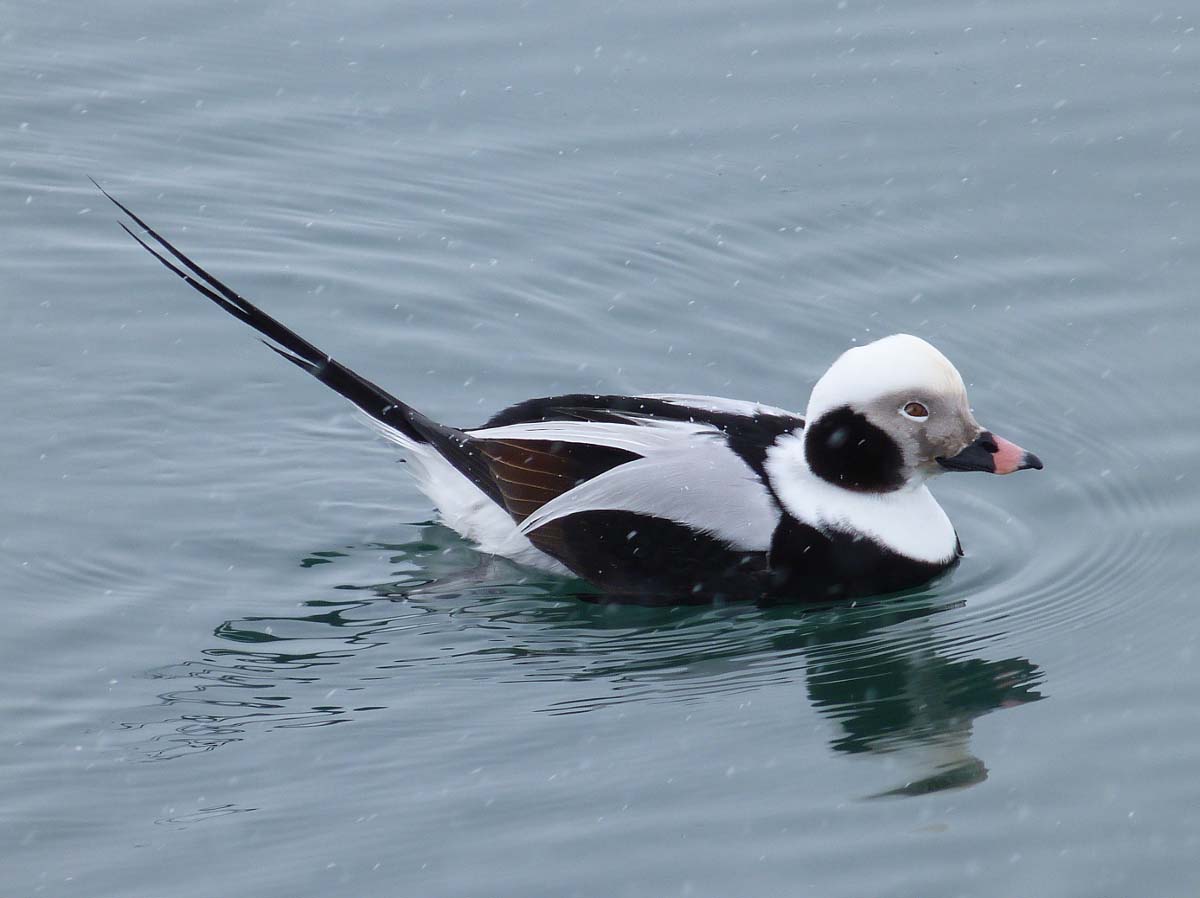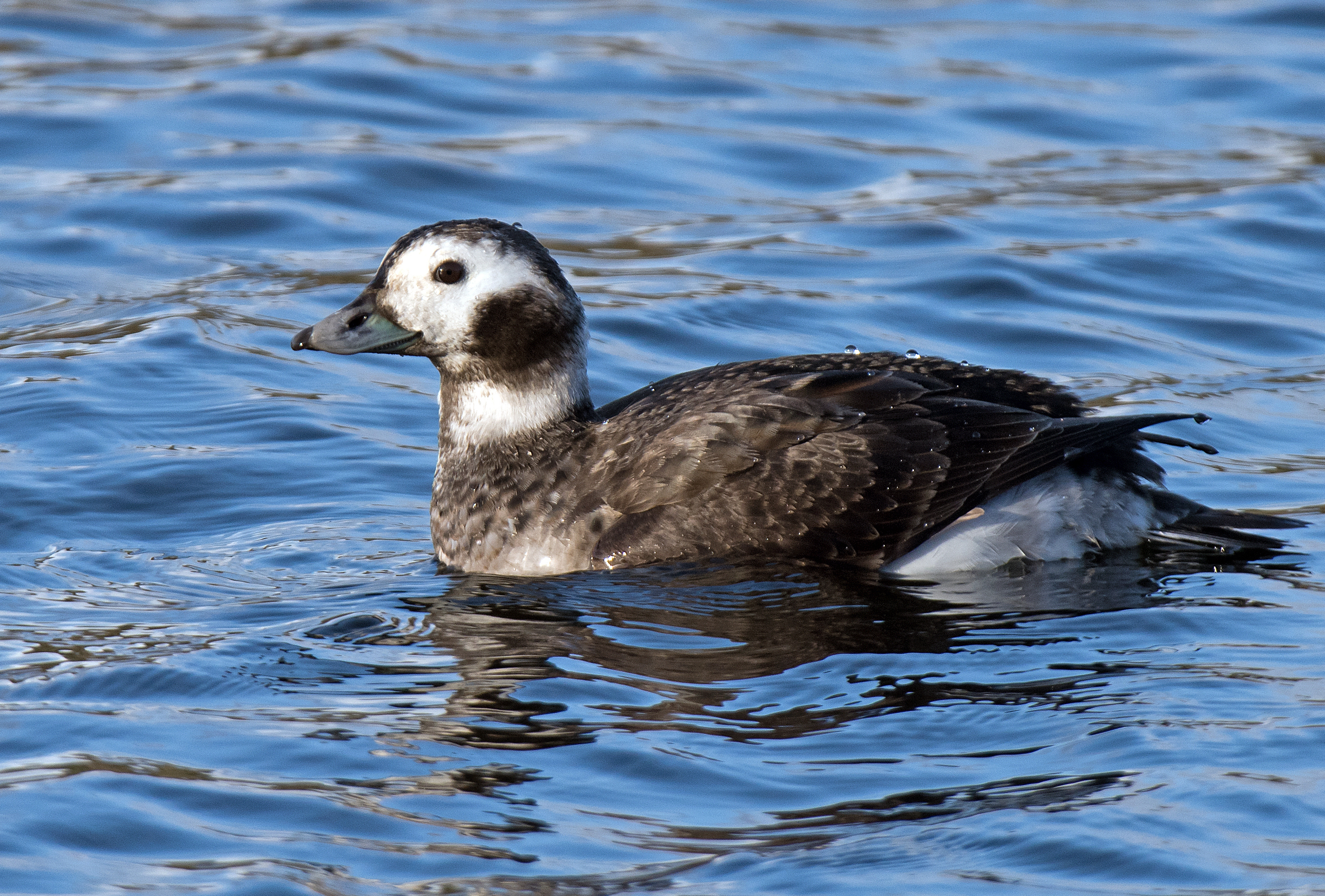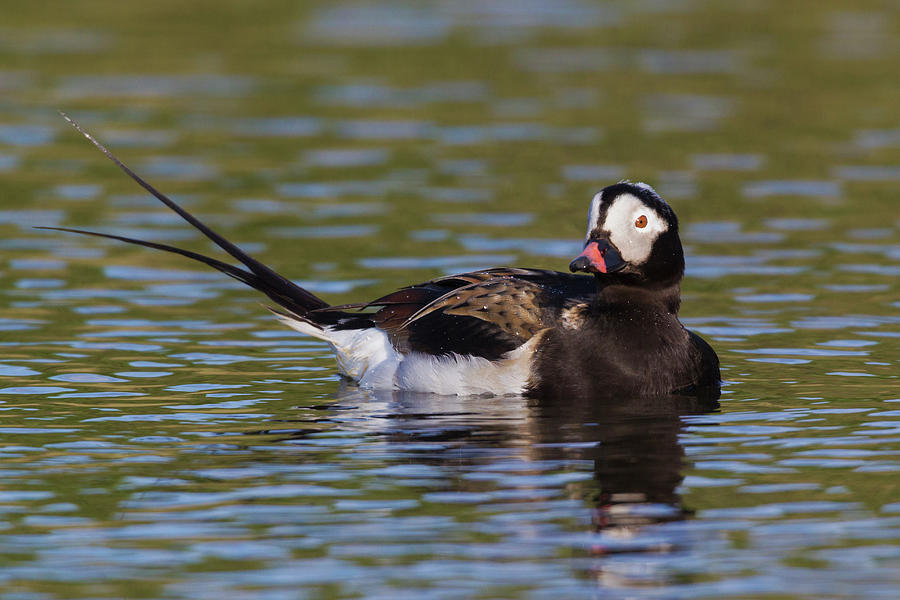
Long-tailed Ducks migrate south in fall in bright winter plumage, but they molt again in spring, so on the breeding grounds they look distinctly different from their winter garb. Think about a familiar species like a male Northern Pintail or Wood Duck - they wear the same bright, beautiful patterns in early June that they showed in December. Most ducks molt into their brightest plumage in fall and wear it until early summer. One more point in the Long-tailed Duck’s catalog of unique traits: It has an unusual sequence of plumages. In fact, they’re considered to have one of the most varied diets among ducks. They tend to focus on whatever food is locally abundant at a given season, in either saltwater or fresh: small crustaceans such as amphipods, crabs, and sand shrimp mollusks such as snails, clams, and mussels larvae of midges, caddisflies, and other insects various small fishes eelgrass and other plants. Their diving abilities allow them to exploit a wide variety of food items available underwater.

Depths of more than 70 feet have been documented in Europe, and anecdotal evidence from the Great Lakes suggests they can dive 200 feet, so they might be the deepest divers of all ducks. However, they can dive far below the surface. Really large concentrations of Long-tailed Ducks may be audible from almost a mile away.Īlong the coast in winter, Long-tailed Ducks tend to stay within a few miles of land or in the relatively shallow waters above offshore shoals.

The rate of calling seems to peak in spring, but it can be heard at most times of year. The pale females and dark-and-white males make for a stunning show, and the scene is punctuated almost constantly by a musical, yelping yow-owdle-ow. A flock provides a spectacle - visually and aurally. This is one of the most vocal of all ducks. Since wanderers have even reached Hawaii, this is a bird to watch for in all 50 states. Large numbers also spend the season on Lake Ontario and elsewhere on northern parts of the Great Lakes.Īlthough the biggest flocks keep to northern latitudes, a few scattered strays are found much farther south - along the coasts of southern California, Texas, and Florida, and on lakes throughout the U.S.

Winter finds the Long-tailed Duck mostly in coastal waters from the southern Bering Sea and the Aleutians south to Washington and from eastern Canada south to the Mid-Atlantic states. In North America, the breeding range takes in most of Alaska and much of northern Canada, including the islands of the Canadian High Arctic. This beautiful diver breeds on Arctic tundra across North America, Europe, and Asia, and it winters along coastlines and on some of the largest lakes. Share to Facebook Share to Twitter Print this Article Share to EmailĬold northern waters around the globe are home to one of the most distinctive of all waterfowl, the Long-tailed Duck.


 0 kommentar(er)
0 kommentar(er)
